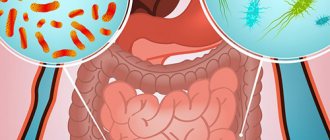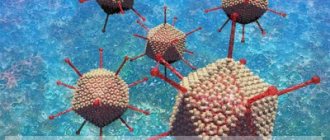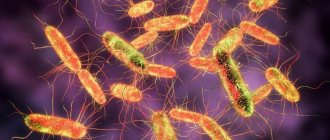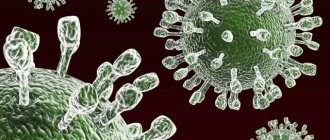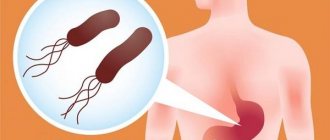Infection: mechanism and route of transmission. Explanation of terms
Experts identify 4 mechanisms of infection transmission:
- fecal-oral;
- aerosol-aerogenic;
- transmissible;
- blood-contact.
Each mechanism is implemented in different ways (methods). This term refers to factors that ensure the penetration of infection into a susceptible organism under certain conditions.
Transmission routes characteristic of the fecal-oral mechanism
Infections characteristic of this transmission mechanism are called intestinal. The pathogen lives in the digestive system of the host. Microorganisms enter the environment along with feces. Pathogens penetrate into a new organism in various ways. Here are the ways of transmitting intestinal infections:
- aqueous (when drinking contaminated water);
- food (through eggs, meat, fish, milk, contaminated vegetables, fruits and berries);
- contact and household (through various household items).
Microorganisms appear in water due to direct contact with feces or contaminated soil. With food and contact-household transmission, food and household items often become infected after a sick person, who serves as the source of infection, touches them. Flies play an important role in the transmission of pathogens. Pathogenic microorganisms get onto the legs of insects from feces.
Features of the disease
Regardless of the route of transmission of intestinal infections, the disease develops at a rapid pace. The first signs may appear within 1-3 days after infection.
The main causative agents of the disease are rotavirus, enterovirus, adenovirus, rhinovirus or norovirus infections and bacteria. In most cases, an intestinal infection can affect the small intestine or stomach, or both organs at once.
All intestinal infections are conventionally divided into two groups - viral and bacterial. A viral infection is transmitted between people through household contact, airborne droplets, a bacterial infection, in turn, penetrates the intestines and gastric tract through the consumption of insufficiently heat-treated food, contaminated drinking water, as well as neglect of personal hygiene rules.
An intestinal infection can be identified by the following symptoms:
- sharp painful cramps in the abdominal area;
- vomiting and nausea;
- in some cases, a severe headache may occur, turning into a migraine;
- bowel disorders, which most often manifest as diarrhea and can lead to dehydration. In some cases, prolonged constipation may occur;
- loss of appetite, which can lead to persistent weight loss;
- weakening of the body’s immune forces, deterioration of sleep;
- skin itching, rashes.
In some cases, the disease may be completely asymptomatic in the first stages.
In children, an intestinal infection is most often accompanied by an increase in body temperature, so many parents perceive the first signs as ARVI. A little later, the symptoms are joined by sharp painful spasms in the abdominal area, as well as stool upset.
A viral intestinal infection is extremely contagious - it can be provoked by even a minimal amount of viral agents. In order to infect a healthy person, 15-100 particles of the virus are enough. In such cases, the carrier of the disease must undergo timely and correct treatment, and everyone around them must carefully observe the rules of personal hygiene.
An example of an infection with a fecal-oral transmission mechanism
One of the well-known human diseases is dysentery. This is a disease characterized by syndromes of gastrointestinal damage and general infectious intoxication. The disease occurs due to dysentery bacilli belonging to the genus Shigella. Methods of transmission of infection are water, food and household contact.
Currently, dysentery is diagnosed in isolated cases. Infection occurs:
- due to the use of water from the river, wells, pumps, which are in unsatisfactory sanitary and technical condition;
- eating insufficiently processed food (dirty, raw).
Outbreaks - group diseases - are also possible. Water epidemics are caused by violations of decentralized and centralized water supply. Contact-household outbreaks often occur in preschool institutions due to violations of the anti-epidemic regime (for example, due to poorly performed disinfection measures).
Symptoms of intestinal flu
Vomiting with intestinal flu, as a rule, is the first sign of the disease (only 10% of patients experience vomiting on the second day of illness). A typical rotavirus infection is characterized by repeated vomiting, which lasts 2-3 days.
Diarrhea with intestinal flu is often accompanied by pain (moderate, less often severe pain in the navel). The stool is copious, watery, foamy, yellow in color, without blood or any impurities. Vomiting and diarrhea often lead to dehydration (in typical cases, degrees 1-2).
Fever with intestinal flu rarely reaches high numbers (up to 38, less often up to 39 degrees Celsius); in some cases, an increase in temperature is accompanied by symptoms of intoxication (headache, weakness, muscle aches). The duration of the febrile period is 2-4 days.
Vomiting with intestinal flu is usually the first sign of the disease
Routes of transmission of infection by aerosol-aerogenous mechanism
This transmission mechanism has several names. In the specialized literature you can find such names as aspiration, aerosol, drip. Having analyzed them, it can be understood that the aerosol-aerogenous transmission mechanism is characterized by the localization of the pathogen in the organs of the respiratory system.
Microorganisms can be transmitted in the following ways:
- Airborne. The pathogen is released when coughing, sneezing, or talking. Droplets of infected mucus enter the environment and then enter the bodies of healthy people with the air.
- Airborne dust. With this method of transmission, a healthy person becomes infected after particles of suspended dust containing the infection enter the body.
Stomach flu during pregnancy
Therefore, treatment of intestinal flu in pregnant women should be carried out under the supervision of a doctor. In cases where there is a risk of dehydration, the woman is prescribed intravenous fluid, which will immediately eliminate the risk of complications.
As for the causative agent of intestinal flu itself, it belongs to microorganisms that are absolutely harmless to the fetus. Therefore, you should not be afraid that your baby is in danger after suffering from an illness.
When treating intestinal flu in pregnant women, it should be taken into account that not all medications can be taken by expectant mothers, and this is another reason to consult a doctor.
Examples of diseases with aerosol-aerogenic transmission mechanism
Influenza is a common viral disease. The main method of transmission of infection is airborne droplets. The disease affects the upper respiratory tract. When the virus enters the body of a healthy person, symptoms such as weakness, headaches, muscle and joint pain appear. Body temperature rises. After some time, patients begin to complain of nasal congestion, sore throat, and dry cough.
The airborne dust mode of transmission is characteristic of scarlet fever, a streptococcal infection characterized by a pinpoint rash, sore throat and signs of general intoxication. When the disease occurs, pathogens are released from the body of a sick person with sputum and pus. They are very resistant to environmental factors. This explains the possibility of infection through air and dust.
Diagnostics
If an intestinal infection is suspected, the patient should contact his or her physician. After the examination, the doctor will be able to suggest a specific diagnosis and prescribe treatment. In severe cases of the disease or if a specific infection is suspected (for example, dysentery), the patient is sent to a specialized infectious diseases hospital for specialized therapy and provision of the necessary isolation.
To confirm the diagnosis of intestinal infection, the following diagnostic methods are used:
- Stool examination. The coprogram makes it possible to examine stool, detect possible impurities of blood, immune cells, isolate bacteria and send them for culture.
- Bacteriological examination of stool. Culture of biomaterial obtained from a patient is the main way to determine the causative agent of the disease. Bacteria are cultivated on special nutrient media and carefully examined, which makes it possible to establish the type of pathogenic bacterium. In addition, after identifying the pathogen, it is tested for sensitivity to antibiotics, which makes it possible to accurately select effective therapy for the patient.
- Serological studies. An additional diagnostic method is to test for antibodies in the patient’s blood. They are released in response to exposure to bacteria after 4-5 days. Antibodies have high specificity for a particular bacterium, making it possible to determine the type of microorganism.
Routes of transmission of infection through a transmissible mechanism
The transmissible transmission mechanism is characterized by the presence of pathogens in the host’s blood. The infection enters a healthy body through arthropods (fleas, lice, mosquitoes, ticks, flies). Carriers are divided into specific and nonspecific. The first group includes arthropods that carry certain diseases. For example, mosquitoes are specific carriers of malaria, and lice are specific carriers of typhus. The second group includes flies that carry acute intestinal infections, typhoid fever, and hepatitis A.
The transmission mechanism can transmit:
- anthroponoses (only humans serve as the reservoir and source of infection);
- zoonoses (animals are the reservoir and source of infection);
- anthropozoonoses (the source of infection can be both animals and humans).
Complications and consequences of intestinal flu
The group at increased risk of developing life-threatening complications of intestinal influenza includes newborns, children under 5 years of age, elderly people, and patients with severe concomitant diseases.
Separately, it should be said about the course of intestinal flu in persons with immunodeficiency (HIV, etc.). In such cases, the development of necrotic processes in the intestine is possible due to the activation of its own bacterial flora (necrotizing enterocolitis and hemorrhagic gastroenteritis).
“Mild” complications of intestinal flu include bacterial overgrowth syndrome and lactase deficiency (a deficiency of the enzyme that breaks down lactase, which can lead to intolerance to milk and dairy products). Such complications can occur even with a relatively mild course of the disease.
Examples of vector-borne diseases
One of the vector-borne infections is malaria. This is an anthroponotic disease caused by protozoa of the genus Plasmodium. Pathogenic microorganisms are transmitted from sick people to healthy people through mosquitoes belonging to the genus Anopheles. The new host becomes infectious only when the sexual forms of the pathogen - gametocytes - appear in the blood. For example, with tropical malaria this occurs approximately a week after the onset of parasitemia and continues throughout the year.
Another example of a disease with a vector-borne transmission mechanism is plague. The causative agent is Yersinia pestis (a non-motile, rod-shaped bacterium). The source of infection in nature is rodents, and the carrier is fleas. In these blood-sucking insects, after consuming infected blood, the plague microbe begins to multiply in the digestive system. Pathogens accumulate and fill the lumen of the digestive tube. With subsequent bites of animals or people, fleas regurgitate the pathogens and thereby ensure infection.
Contagiousness of intestinal flu
The results of epidemiological studies have shown that 90% of children in older age groups have had intestinal flu. After an illness, an unstable immunity to a given serotype of the virus is formed, so re-infection is possible, but the disease occurs in a milder form.
The main source of rotavirus infection is a sick person who excretes the virus in the stool. The peak release of viral particles occurs on the last day of the incubation period and the first days of illness, but the total duration of virus release can reach three weeks.
Thus, the greatest danger in terms of infection is posed by those who have just become infected, as well as those who have recently recovered from illness, who feel absolutely healthy and spread the infection in work groups, nurseries, kindergartens, schools, etc.
Transmission routes inherent in the blood-contact mechanism
The blood-contact transmission mechanism is characteristic of many infections: bacterial, fungal, viral, protozoal, parasitic. Pathogens enter the body in different ways. For this reason, the following methods of transmission of infection are distinguished:
- vertical;
- parenteral;
- transplantation;
- sexual.
The vertical mode of transmission of infection is explained by the penetration of the pathogen into the fetal body from the body of a pregnant woman through the placenta. The parenteral method is characterized by medical procedures. For example, in some cases, people become infected in the dental office when the doctor uses unsterile instruments. The transplantation method of transmission of infection is realized during the transplantation of internal organs. The latter route is inherent in diseases transmitted through sexual intercourse.
In addition, a contact method of transmission of infection can be distinguished. With it, infection occurs through direct contact with the source of pathogens and introduction to the surface of the mucous membranes and skin (for example, with scabies)
Chemical method
The chemical method is the destruction of arthropods using various chemicals.
The use of chemical poisons to control arthropods is the most effective method.
Chemicals used to control insects are called insecticides, to control ticks - acaricides, against lice - pediculicides, against arthropod larvae - larvicides, acting on arthropod eggs - ovicides, acting on mature forms - imagocides. The general name of these drugs is insectoacaricides, which in turn are classified as pesticides.
Depending on the routes of entry into the body of arthropods, insectoacaricides are divided into contact, penetrating through the integument of the body, intestinal, penetrating through the digestive organs, and fumigants, penetrating through the tracheal system. The group of intestinal poisons also includes systemic insectoacaricides, which enter the body of arthropods when they feed on the blood of animals or humans.
With all methods of penetration into the body of arthropods, the insecticide enters the hemolymph flow and spreads to various parts of the body, having a toxic effect on metabolic processes and the conduction of nerve impulses.
An example of a disease with a blood-borne transmission mechanism
The current medical and social problem is that many people do not know or ignore the methods of transmitting sexually transmitted infections and do not protect themselves during casual relationships. This is why STDs are often diagnosed by doctors.
An example of an infection with a blood-borne transmission mechanism is HIV. This disease affects the immune system. It is gradually destroyed until the formation of AIDS (acquired immunodeficiency syndrome). The causative agent is a virus from the retrovirus family. The source of infection is a sick person.
Sexual and vertical modes of transmission of infection are the main (natural) ones for this disease. Artificial transmission routes (parenteral and transplantation) are also actively being implemented. In this case, the virus penetrates through damaged skin and mucous membranes during diagnostic and treatment procedures, drug administration, and tattooing in unsterile conditions.
Course of the disease and duration of intestinal flu
The total duration of intestinal flu is 7 days.
According to the course of the disease, intestinal flu is divided into three forms: mild, moderate and severe. In this case, the main criterion of severity is the frequency of stool.
A mild course of intestinal flu is said to occur in cases where the frequency of stool does not exceed 5-10 times a day. In moderate cases, the frequency of stool reaches 10-20 times a day, which leads to grade 1-2 dehydration. For a moderate course, febrile fever is more typical (the temperature rises to 38-39 degrees Celsius).
Severe intestinal flu is relatively rare. In such cases, the frequency of stool exceeds 20 times a day, which leads to an increase in the severity of the patient’s condition by the 3-4th day of illness (dehydration of 2-3 degrees). Complications associated with dehydration may develop.
Nosocomial infections
Nosocomial infections (HAIs) deserve special attention. This is a very serious problem. With an HAI, people become infected when they enter the hospital or seek medical care. Nosocomial infections cause significant damage to health. In addition, they increase the duration of treatment and time spent in a medical facility, cause complications, and sometimes even lead to death.
The methods of transmission of infection in a health care setting are varied. Pathogens enter human bodies both natural (fecal-oral, aerosol-aerogenic) and artificial (during invasive therapeutic and diagnostic procedures) routes. Nosocomial infections arise not only due to non-compliance with the sanitary-hygienic and anti-epidemic regime, but also due to the emergence of microorganisms resistant to chemotherapy, antibiotics and adverse environmental factors.
In conclusion, it is worth noting that each disease is characterized by certain routes (methods) of transmission of infections. By knowing how infection occurs, you can prevent the occurrence of certain ailments (for example, not eating dirty foods, avoiding casual sex, leading a healthy lifestyle and giving up drugs).
Epidemiological characteristics of intestinal infections
Intestinal infections are polyetiological diseases with differences in epidemiology, but united by a common feature - the primary localization of the pathogen in the gastrointestinal tract, which determines the uniqueness of the fecal-oral transmission mechanism.
The share of intestinal infections in the structure of infectious morbidity is small, but their socio-economic significance is great. Intestinal infections are widespread, they are not controlled by means of immunoprophylaxis, and the incidence of some of them is widespread.
Etiological agents of infections
The etiological agents of infections with a fecal-oral transmission mechanism (acute intestinal infections) can be bacteria, viruses, protozoa and helminths. In the structure of intestinal infections, taking into account the reservoir and source of infection, intestinal anthroponoses, zoonoses, and sapronoses are distinguished, which must be taken into account when planning and carrying out anti-epidemic measures.
Symptoms and treatment of intestinal flu in children
Every year, several million children die from intestinal flu around the world. The main cause of death in such cases is dehydration, followed by bacterial infection.
Diarrhea in a child under 5 years of age is an indication for urgent medical attention!
Parents of infants (up to one year) and newborns (up to 4 weeks from birth) should be especially attentive.
In children, intestinal flu often occurs with catarrhal syndrome (sore throat, cough, sneezing, runny nose, nasal congestion, redness of the soft palate and palatine arches). All symptoms of damage to the upper respiratory tract disappear by the third day of illness, otherwise you should think about the addition of a bacterial infection.
Since intestinal flu often leads to lactase deficiency, when returning to a dairy diet, a short-term but sharp deterioration in the condition is possible.
Section 2. Mechanism of transmission of intestinal infections
Mechanism of transmission of intestinal infections
Pathways and factors of transmission
The spread of intestinal infections is facilitated by the multiplicity of pathways and factors that implement the fecal-oral mechanism of transmission of the causative agent of intestinal infections.
The final factors of pathogen transmission are water, food, dirty hands and household items, and the primary and intermediate factors are soil, flies, water, dirty hands, etc.
Within the framework of the transmission mechanism, there are:
main (main) routes: food and water;
pathways that may be important under certain conditions and in relation to certain groups of the population: hands and household objects.
Food products become contaminated by contaminated hands of the source of infection. It is dangerous to become infected with the hands of a source of infection of a product after heat treatment (dairy, meat, fish products, confectionery, etc.) or a product that is not subject to heat treatment (vegetables, fruits, etc.).
Depending on the physicochemical characteristics of the product, storage temperature, properties (stability) of the microorganism itself, the pathogen found in the food product can:
die - there is no epidemic process;
persist - the epidemic process will manifest itself in the form of isolated (sporadic) cases;
multiply (accumulate) - the epidemic process will manifest itself in the form of an increase in morbidity (outbreak).
develop, as a rule, acutely: a sharp rise in incidence, a sharp decline (if the product is completely consumed after a single consumption), then a sluggish course of the epidemic process is possible for some time (the so-called contact tail);
monoetiological - even within a species, cultures isolated from patients are identical;
Diseases are most often severe - consumption of a contaminated product is accompanied by receiving large doses of the pathogen.
Characteristics of the pathology
An intestinal infection is an acute inflammatory disease that affects the stomach and intestines. It occurs due to pathogenic microorganisms. These are viruses, bacteria, or protozoa that enter the body through the mouth. Then they enter the intestines and multiply.
There are more than 30 types of pathogens of intestinal infections. Some of them are common, such as rotavirus, giardiasis or staph infection. There are diseases that are almost never seen now - these are paratyphoid or cholera. Such diseases develop when the body is exposed to protozoa, such as amoebas or bacterial toxins.
But always with intestinal infections, regardless of their type, the same symptoms appear:
- temperature rises;
- weakness, headaches appear;
- stool becomes frequent and loose;
- nausea and vomiting develops;
- severe abdominal pain occurs.
The pathology begins suddenly, and no more than 2-3 days pass from infection. The infection is accompanied by general intoxication of the body and usually goes away after a few days. Only in 10% of cases, this disease requires the use of antibacterial or antiviral agents; most often the body copes with the infection on its own. You just need to help him by strengthening his defenses and replenishing fluid reserves.
Any intestinal infection is very contagious, but not everyone gets sick. Children, elderly people, patients with chronic diseases or disorders of the gastrointestinal tract are most often susceptible to infection.
Historical information
Gastrointestinal infections have always accompanied humans. For a long time, they were the cause of mass child mortality: the child’s body quickly becomes dehydrated. Other infectious diseases played a lesser role in the mortality of children under one year of age, although in the population their role as a population regulator was significant.
Among the intestinal infections were quarantine ones, which regularly spread in epidemics. At this time, the mortality rate of the population of all ages went off scale. Unsanitary conditions and overcrowding of people in cities led to the spread of epidemics. It was noticed that the incidence of quarantine intestinal infections decreased sharply after the construction of sewer networks.
Educational work has played a major role in the fight against intestinal diseases, especially in children's institutions. It would seem that very simple procedures: washing hands before eating, heat treatment of food, boiling water - have proven effective in combating the spread of infectious diseases.
Prevention
- wash your hands regularly before eating;
- consume meat and dairy products from proven sources;
- do not drink water from natural reservoirs, do not swim on unofficial beaches;
- wash fruits and vegetables thoroughly, even before heat treatment;
- observe the rules of personal hygiene, do not use other people’s personal belongings (for example, towels);
- If possible, limit contact with people who have signs of intestinal infections.
Types of intestinal infections
Among the many microorganisms that live in the intestines, we can highlight:
- Microorganisms of natural microflora that ensure the digestion process.
- Opportunistic organisms that lead to the development of diseases when the immune system is weakened.
- Specific pathogenic flora brought from outside and leading to the development of an acute infectious disease.
The first include lacto- and bifid flora, the second include Escherichia coli and Staphylococcus aureus, as well as a number of viruses - for example, the causative agent of polio, and the third - Shigella, vibrio, rotavirus and others that are absent in a healthy body. They lead to the development of the disease.
Acute intestinal infections are a large group of diseases characterized by a number of common symptoms. The main ones are diarrhea and dehydration. In other respects they differ, and these differences are very important for correct diagnosis. The most common specific infections can be listed in the table.
| Infection | Pathogen | Pain syndrome | Temperature | Character of the chair | Other Features |
| Dysentery | Shigella | expressed | 38−39, lasts three days | high in mucus | pain when pressing on the left iliac region |
| Typhoid fever | Salmonella enterica | not expressed | 38−39, lasts more than a week | alternating constipation and diarrhea | acute fever, possible development of infectious-toxic shock, rash |
| Rotavirus infection | Rotavirus | not expressed | up to 39, up to three days, may be absent | severe diarrhea on the first day | high degree of dehydration, after the end of the disease, temporary intolerance to milk, respiratory symptoms |
| Cholera | Vibrio cholerae | expressed in the navel area, muscle spasms are possible | absent | profuse diarrhea that turns into water when there is no stool | loss of up to 10% of weight, without treatment may be fatal |
| Salmonellosis | Salmonella typhimurium | headache | 38−39, up to a week | multiple watery | possible damage to the liver, spleen, and kidney failure |
How to determine the time of infection from food
Food stays in the stomach for 4-6 hours for it to be completely digested. It takes from 6 to 8 hours , where nutrients are absorbed. The remains then enter the colon and remain there for 1 to 3 days .
These times are approximate and may vary from person to person. To determine the transit time of food, gastroenterologists advise eating corn and observing the stool. In this way, you can calculate the time it takes for food to pass through, and next time you can more accurately determine the product that caused discomfort or diarrhea.
If cramping and diarrhea began, it was most likely the result of eating something 18-48 hours before (depending on the result calculated using corn).
